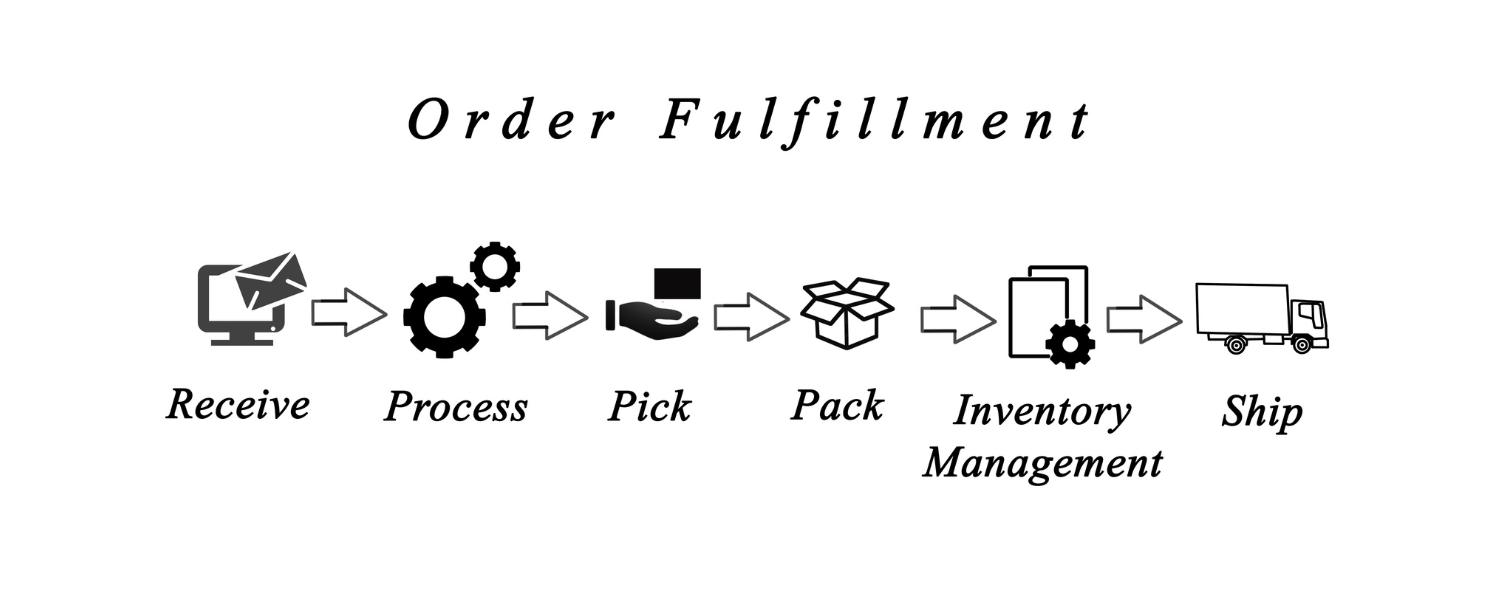An organization's sales team takes upon itself a plethora of tasks to bring revenue to the organization. However, the journey of all the revenue streams starts from one single point- a quote.
In this article, we will read about Quote to Cash- the process that involves the numerous steps in the procurement of sales by the sales department of an organization. Also, we will discuss the facets of the quote-to-cash workflow and tips on how you can improve your process.
What is Quote to Cash?
 The journey of a sale from the original quote or the enquiry till it converts into sales bringing revenue for the company, is known as quote-to-cash. It involves a set of processes on the company's part to ensure that the quote that comes in is converted into cash.
The journey of a sale from the original quote or the enquiry till it converts into sales bringing revenue for the company, is known as quote-to-cash. It involves a set of processes on the company's part to ensure that the quote that comes in is converted into cash.
Your quote-to-cash process is a decisive factor regarding your sales as it affects the company's revenue and profitability. QTC is the process of closing a sale and acquiring revenue. It is the most important last mile to complete a sale and is an indispensable component of the sales strategy of any organization.
While the sales team is the most critical component of the QTC, many other teams participate in the whole process of the quote to cash. For example, the account management team plays its role by performing order fulfilment, the supply chain management can work to ensure the presence of inventory, the logistics department takes care of the delivery etc.
The Quote-to-Cash Workflow
 The sales team has to undergo many steps, such as cold calling and working on leads before the quote-to-cash process begins. However, the request for a proposal by the customer is the first point where the QTC process is initiated. Mentioned below are the seven steps involved in the QTC workflow.
The sales team has to undergo many steps, such as cold calling and working on leads before the quote-to-cash process begins. However, the request for a proposal by the customer is the first point where the QTC process is initiated. Mentioned below are the seven steps involved in the QTC workflow.
1. Configuration of The Quote
 A quote's preparation begins with the proposal's configuration by setting the products or services that the customer needs. In the configuration process, a significant role is played by the sales pitch that the salesperson has offered to the client.
A quote's preparation begins with the proposal's configuration by setting the products or services that the customer needs. In the configuration process, a significant role is played by the sales pitch that the salesperson has offered to the client.
To make a good proposal, it is vital to understand the client's requirements and give them a proposal that meets their needs and provides profit to the organisation.
2. Pricing
 Once you have decided on a quote suiting the customer's needs, you must figure out the pricing of each element and the complete quote. Generally, companies use software to generate automated pricing, ensuring the company's accuracy and profitability.
Once you have decided on a quote suiting the customer's needs, you must figure out the pricing of each element and the complete quote. Generally, companies use software to generate automated pricing, ensuring the company's accuracy and profitability.
However, some companies still use manual help to do so. The price depends upon multiple factors, including discounts, special prices, promotional pricing etc.
3. Complete the Quote
 Once a quote is made and the effective pricing is set in place, it is time to create a business proposal. The proposal contains all the information regarding the products and the services and the price of them all. In addition, it includes legal documentation outlining the agreement of the customer with the company. Generally, the sales teams devise a standard template to create a business proposal.
Once a quote is made and the effective pricing is set in place, it is time to create a business proposal. The proposal contains all the information regarding the products and the services and the price of them all. In addition, it includes legal documentation outlining the agreement of the customer with the company. Generally, the sales teams devise a standard template to create a business proposal.
4. Negotiation
 There are some instances where the customer or the company want to negotiate the price or other factors regarding the business proposal. After a few rounds of negotiation, both the parties come to a common ground, and both finally sign the contract.
There are some instances where the customer or the company want to negotiate the price or other factors regarding the business proposal. After a few rounds of negotiation, both the parties come to a common ground, and both finally sign the contract.
5. Order fulfilment
 The account manager takes up this job. The company has to deliver the product or the services within the given time and in the correct shape (without depreciation or logistic errors). This is also a lengthy process taken up by supply chain management in the logistics-related industries.
The account manager takes up this job. The company has to deliver the product or the services within the given time and in the correct shape (without depreciation or logistic errors). This is also a lengthy process taken up by supply chain management in the logistics-related industries.
6. Billing and Invoicing
 The end of the quote to cash cycle is marked by payment collection. The company creates a bill and invoice and sends it to the customer, who pays the accounts receivable.
The end of the quote to cash cycle is marked by payment collection. The company creates a bill and invoice and sends it to the customer, who pays the accounts receivable.
Here, the bills need to be accurate, must be provided to the customer through multiple sources (email and physical etc) and the customer should be given numerous pays to be able to pay the bills.
7. Post-QTC Analysis
 This step is generally done after the quote-to-cash process is complete, yet it is still an essential part of the process. It helps companies get valuable insights regarding their workflow.
This step is generally done after the quote-to-cash process is complete, yet it is still an essential part of the process. It helps companies get valuable insights regarding their workflow.
Here the companies need to analyse the time taken by the workflow and the efficiency of the workflow. Also, if they face any workflow problem, it must be highlighted and cured for future orders.
How to Improve Your Quote to Cash Process
 The QTC process involves the most essential tasks that are conducted by a company. Therefore, it is vital for organisations to lay emphasis on the quality of their QTC process. Mentioned below are a few tips or best practices with which you can enhance the effectiveness of your quote-to-cash process.
The QTC process involves the most essential tasks that are conducted by a company. Therefore, it is vital for organisations to lay emphasis on the quality of their QTC process. Mentioned below are a few tips or best practices with which you can enhance the effectiveness of your quote-to-cash process.
1. Creating a Robust Quoting Process
 You must streamline your quoting process with the help of up-to-date payment terms and invoice schedules etc. With this, the delivery and the finance team will have to witness fewer changes.
You must streamline your quoting process with the help of up-to-date payment terms and invoice schedules etc. With this, the delivery and the finance team will have to witness fewer changes.
2. Set standards for terms and conditions
 Your contracts should be airtight with standardized terms and conditions so that no confusion prevails in the customers' minds.
Your contracts should be airtight with standardized terms and conditions so that no confusion prevails in the customers' minds.
3. Structurise your approval process
 Approvals must be quick and instant, as a slow approval process can adversely affect your relationship with your customer. In addition, your approval process must be able to notify the customers whenever their attention or signature is required.
Approvals must be quick and instant, as a slow approval process can adversely affect your relationship with your customer. In addition, your approval process must be able to notify the customers whenever their attention or signature is required.
4. Incorporate new services when necessary
 You must have the capability to make changes to your contract according to the customer's needs. Whenever they add a new service to the list, you should be able to add it along with its price for the next billing cycle.
You must have the capability to make changes to your contract according to the customer's needs. Whenever they add a new service to the list, you should be able to add it along with its price for the next billing cycle.
5. Use automated tools and software
 To make the quote to cash processes accurate, efficient and better in multiple ways, you can utilise some tools and software for automation of everyday tasks. Final Words
To make the quote to cash processes accurate, efficient and better in multiple ways, you can utilise some tools and software for automation of everyday tasks. Final Words
Every organisation must be aware of the value that an efficient QTC process holds. Also, updation is an inevitable factor for a good quote to cash process.
The companies must be updated with the latest software and tools which can help them maintain the quality of the QTC workflow at each step, without having to put a lot of human effort into it.
Finally, an effective quote to cash process leads to happy customers and more revenue for the organisation.
















